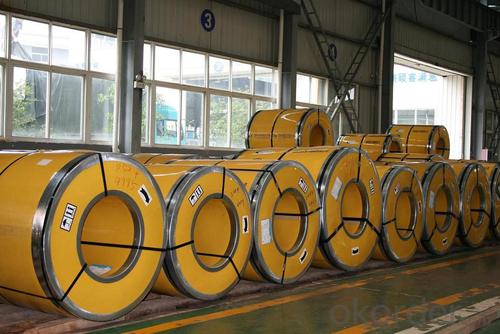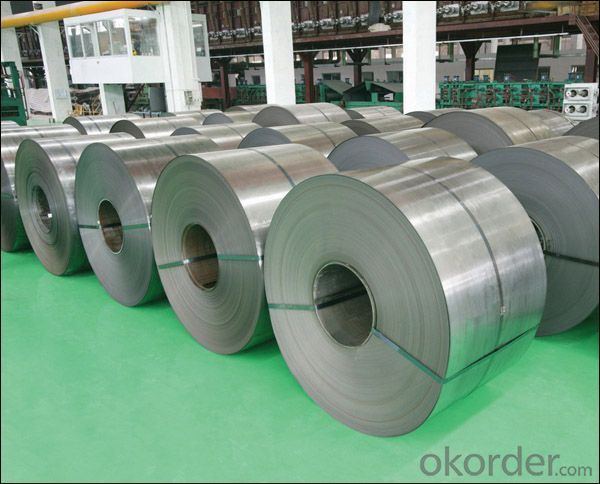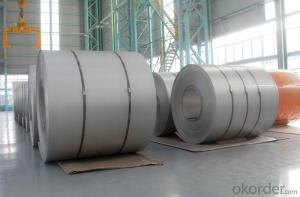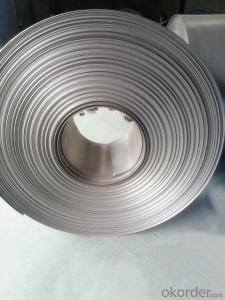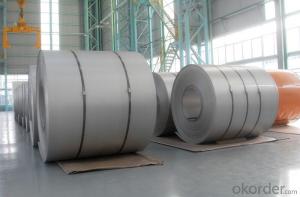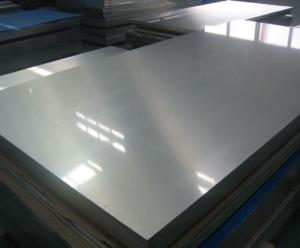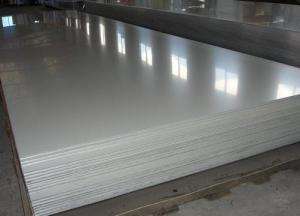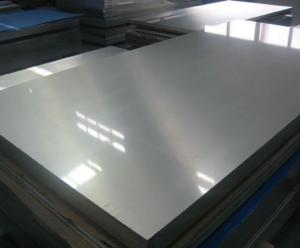430 SERIOUS HOT ROLLED STAINLESS STEEL COILS/SHEETS
- Loading Port:
- Shanghai
- Payment Terms:
- TT OR LC
- Min Order Qty:
- 100 m.t.
- Supply Capability:
- 20000 m.t./month
OKorder Service Pledge
OKorder Financial Service
You Might Also Like
| Grade: | 400 Series | Standard: | JIS,AISI,ASTM,GB,DIN,EN | Thickness: | 0.21-3.0mm |
| Width: | 345-550mm | Place of Origin: | Guangdong China (Mainland) | Model Number: | 430 |
| Technique: | Hot Rolled | Application: | Kitchenware, decoration,plate , kitchenware , tableware , hardware, da | Certification: | ISO |
Packaging & Delivery
| Packaging Detail: | wooden pallet |
| Delivery Detail: | 30 days after receiving deposit |
Specifications
stainless steel coil
1)Surface:No.1
2)Thickness:2.4-4.0mm
3)Width:345-550mm
Product Description
1)Chemical composition
C | Si | Mn | P | S | Cr | |
0.12 | 1.00 | 1.00 | 0.04 | 0.030 | 16-18 | |
0.12 | 1.00 | 1.00 | 0.04 | 0.030 | 16-18 |
2)Product detailed information
Product Name | 430 hot rolled stainless steel coil |
standared | SUS |
Thickness | 2.4mm --4.0mm |
Width | 345mm --555 mm |
Surface finish | No.1 |
Application | plate , kitchenware , tableware , hardware, daily products , decorative pipe and tube, hinge , etc. |
Payment terms | T/T 30% for deposit, Balance against the copy of B/L; or L/C at sight |
Product Packing | wooden pallet |
Delivery time | within 15-20 working days after we got your 30% deposit |
Attention | FREE SAMPLES can be sent on request. We promise to provide our valued clients with high quality products, low price, and excellent client services. |
- Q: What are the common length tolerances for stainless steel strips?
- The common length tolerances for stainless steel strips typically vary depending on the specific industry standards and requirements. However, common length tolerances for stainless steel strips can range from +/- 0.005 inches to +/- 0.030 inches, or even tighter tolerances depending on the precision needed for the application.
- Q: Are stainless steel strips resistant to staining?
- Yes, stainless steel strips are highly resistant to staining due to their chromium content that forms a protective oxide layer on the surface, preventing rust and staining.
- Q: Are stainless steel strips suitable for cryogenic storage?
- Stainless steel strips are indeed suitable for cryogenic storage due to their excellent strength, durability, and corrosion resistance. This material is highly favored for cryogenic applications due to its ability to withstand extremely low temperatures, typically below -150 degrees Celsius (-238 degrees Fahrenheit), without compromising its structural integrity. Moreover, stainless steel's low thermal conductivity aids in reducing heat transfer and maintaining the desired temperature within the cryogenic storage system. Therefore, selecting the right grade of stainless steel is crucial to ensure it meets the necessary specifications and can endure the specific conditions of the application.
- Q: Are stainless steel strips resistant to corrosion?
- Yes, stainless steel strips are resistant to corrosion. Stainless steel is made up of a combination of iron, chromium, and other elements that form a protective layer on the surface of the metal. This layer, known as a passive film, prevents the metal from coming into direct contact with oxygen and moisture, which are the main causes of corrosion. The chromium content in stainless steel is responsible for the formation of this protective film, and the higher the chromium content, the more resistant the stainless steel is to corrosion. Therefore, stainless steel strips are known for their excellent corrosion resistance, making them suitable for a wide range of applications in various industries.
- Q: Are stainless steel strips suitable for water treatment plants?
- Yes, stainless steel strips are suitable for water treatment plants. Stainless steel is highly resistant to corrosion and can withstand the harsh conditions and chemicals present in water treatment processes. It offers excellent durability, hygiene, and long-term performance, making it an ideal material for various applications in water treatment plants.
- Q: Can stainless steel strips be used for heat exchanger plates?
- Yes, stainless steel strips can be used for heat exchanger plates. Stainless steel is a highly durable and corrosion-resistant material, making it suitable for use in heat exchangers. The strips can be easily formed into plates of various shapes and sizes, providing flexibility in design and installation. Additionally, stainless steel has excellent thermal conductivity, ensuring efficient heat transfer between fluids. Overall, stainless steel strips are a popular choice for heat exchanger plates due to their strength, resistance to corrosion, and thermal conductivity properties.
- Q: What are the different surface patterns available for stainless steel strips?
- Stainless steel strips come in a variety of surface patterns, each with its own unique characteristics and aesthetics. Some commonly used patterns include the following: 1. The No. 1 finish is the most frequently used surface finish for stainless steel strips. It has a rough, dull, and non-reflective surface, typically achieved through hot rolling methods. 2. The No. 2B finish is obtained by subjecting the strip to a further cold rolling process after the No. 1 finish. It has a slightly smoother and brighter appearance compared to the No. 1 finish, with a moderate level of reflectivity. 3. The No. 3 finish, also known as a brushed finish, involves brushing the stainless steel strip with abrasive materials. This creates a distinct linear brushed pattern, giving the strip a textured and matte appearance. 4. The No. 4 finish is a highly popular surface pattern. It is achieved by polishing the strip with finer abrasives, resulting in a smoother and more reflective surface compared to the No. 3 finish. It has a satin-like appearance. 5. The No. 8 mirror finish is the highest level of polish achievable for stainless steel strips. It undergoes a series of polishing steps to achieve a reflective, mirror-like surface. It is often used in architectural applications and for decorative purposes. 6. Embossed patterns are another option for stainless steel strips. Various patterns, such as diamond, linen, or leather grain, can be embossed onto the strip by pressing it between embossing rollers. This results in textured surfaces with an appealing visual appearance. 7. Perforated patterns are created by punching holes into the stainless steel strip using specialized machinery. This allows for different hole patterns, shapes, and sizes, providing enhanced functionality and design possibilities. These diverse surface patterns for stainless steel strips offer versatility and cater to a range of applications, including architecture, automotive, household appliances, and decoration. The choice of surface pattern depends on the desired aesthetic appearance, functionality, and specific project requirements.
- Q: Can stainless steel strips be used in the production of medical implants?
- Yes, stainless steel strips can be used in the production of medical implants. Stainless steel is a commonly used material in the medical field due to its excellent corrosion resistance, strength, and biocompatibility. It is often used for surgical implants such as bone plates, screws, and dental implants. Stainless steel strips can be formed, cut, and shaped into various implant components, providing the necessary strength and durability required for medical applications. Additionally, stainless steel is easy to sterilize, making it suitable for use in medical implants where cleanliness and hygiene are crucial.
- Q: What are the physical properties of stainless steel strips?
- Stainless steel strips have become a favored choice in many industries due to their distinct physical properties. To begin with, they are renowned for their durability and strength. This material possesses exceptional tensile strength, enabling it to withstand heavy loads and resist deformation or breakage. Another key physical property of stainless steel strips is their resistance to corrosion. They are specifically engineered to resist oxidation and corrosion, rendering them ideal for applications involving exposure to moisture, chemicals, or harsh environments. Even in corrosive conditions, stainless steel strips can maintain their integrity and appearance, reducing the need for frequent maintenance or replacement. Furthermore, stainless steel strips boast a high melting point, contributing to their overall strength and heat resistance. This characteristic makes them well-suited for applications involving high temperatures, such as those found in the automotive, aerospace, or manufacturing industries. Additionally, stainless steel strips exhibit excellent conductivity. They can efficiently conduct heat and electricity, making them suitable for applications that require efficient heat transfer or electrical conduction, such as in the construction of appliances, electrical enclosures, or heat exchangers. Moreover, stainless steel strips possess a visually appealing appearance due to their smooth and lustrous surface. This quality makes them highly sought after in architectural and decorative applications where aesthetics play a crucial role. In conclusion, the physical properties of stainless steel strips, including their strength, corrosion resistance, high melting point, excellent conductivity, and visually appealing appearance, make them versatile and widely utilized in various industries, including construction, automotive, aerospace, and manufacturing.
- Q: Can 111 stainless steel strips be perforated for filtration applications?
- Yes, 111 stainless steel strips can be perforated for filtration applications.
Send your message to us
430 SERIOUS HOT ROLLED STAINLESS STEEL COILS/SHEETS
- Loading Port:
- Shanghai
- Payment Terms:
- TT OR LC
- Min Order Qty:
- 100 m.t.
- Supply Capability:
- 20000 m.t./month
OKorder Service Pledge
OKorder Financial Service
Similar products
Hot products
Hot Searches
Related keywords




